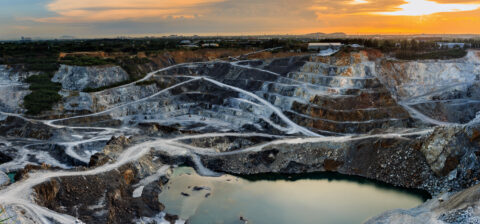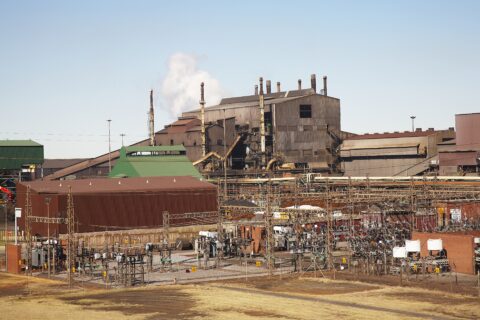SA Mining
COVID-19 And The Mining Industry
By Mongezi Veti – Executive Head: Sustainability at Exxaro Resources.
Before COVID-19, South Africa’s mining industry was already working hard to overcome challenges like rising costs, falling productivity and uncertainty over regulations. In March 2020, President Cyril Ramaphosa announced a nationwide shutdown to help stop the spread of the virus and save lives.
After lockdown restrictions were gradually eased and operations were allowed to continue, South Africa came to face the new year with a second wave of the pandemic and more uncertainty.
Only this time, the mining industry has used the lessons it learnt during the first wave to help ensure business continuity and operational resilience.
In most cases, with strong leadership and cross-company collaboration, we’ve found that mining companies have put in place excellent health and safety measures to monitor and mitigate the spread of the virus and ensure employee well-being.
The impact that this will have on supporting long-term economic recovery is immense and the fact that we have so quickly found new ways to work will go a long way to protecting livelihoods.
The importance of mining in a difficult economy
As well as disrupting production, the virus has wreaked havoc with global supply chains due to factory closures and halted transportation across borders. The restricted movement of people and the closure of non-essential services has also affected demand for commodities, creating the perfect conditions for economic contraction.
Labour markets and the sectors that rely on them have been particularly susceptible to disruption caused by the pandemic.
For a mineral-rich country like South Africa, which employs 420 000 miners and generates roughly 8% of its GDP from the mining sector, a successful recovery of mining operations is not only crucial for achieving economic stability but also for the income of the employees and host communities that depend on its activities.
In South Africa, one mining job can support seven to 10 dependants. The prosperity of indirect economies, such as shops, restaurants or hotels in mining towns, are also deeply connected to the welfare of the mining industry.
Many mining companies offer vital goods and services to remote regions and the people who live there. It’s estimated that almost R1-billion a day was lost to the economy when mines could not operate, making the success of the industry critical to all South Africans.
Adapting to change
This knowledge of how critical the sector is to the country and the people who live in it has galvanised the industry to come together and find ways to work in challenging conditions.
The enclosed spaces in underground mines are much less than ideal for containing the spread of the virus. On top of that, the average age of the industry’s workforce is over 40, making employees much more vulnerable to serious health complications.
Although the deck appeared to be stacked against us, the industry leveraged on its experience in dealing with health and safety to safeguard employees. The mining industry’s history with managing tuberculosis and HIV and responding to crises quickly and efficiently helped us mitigate the effects of this pandemic.
Considerable investments have been made in health infrastructure in the past few years, which has made contact tracing easier. The speed at which health and safety protocols were implemented under government guidelines was impressive.
This included commissioning testing facilities, providing personal protective equipment to all employees and members of the community, establishing good hygiene practices, providing health facilities, reduced shift sizes, making flu vaccines available, conducting temperature screenings, updating business processes, establishing a contact-tracing system, creating awareness campaigns and enhancing employee assistance programmes.
Through the Minerals Council South Africa (MCSA), mining companies have leveraged off each other’s strengths by aligning on recovery efforts. As an example, around 10% of the national mining workforce are foreign nationals and MCSA facilitated the screening, transportation and quarantining of these employees returning across borders after last year’s lockdown.
Many mining companies donated to the Solidarity Fund and assisted government with access to testing and health facilities. Collaboration has also been key to recovery in international mining communities, with the World Economic Forum citing shared values and commitments as the cornerstone of the mining sector’s success.
The COVID-19 death rate of mine workers is far lower for similar age groups in the country as a whole, although we do acknowledge that one death is too many.
The future of mining
While it may take some time for the global demand in commodities to recover, the mining sector should be on a slow, but steady, track to recovery. Despite decreased demand in 2020 and the costs incurred by South African mining companies to keep workers safe, market cap increased by 52% and revenue grew by 4%.
Chinese demand is on the rise as they ramp up infrastructure spending, with vaccine roll-outs expected to spur economic recovery.
There is also a paradigm shift in the making: the global pandemic has prompted more mining companies to look into how they have approached environment, social and corporate governance criteria.
As the real impact of climate change becomes more apparent, companies of the future are looking to diversify into clean energy and more sustainable practices. Stakeholders and investors are pushing for sustainable energy solutions, pointing towards a greener future for the mining industry.
The vulnerabilities that the pandemic has exposed in the labour market could also mean accelerated development of digital transformation, which would improve efficiencies and increase safety at mining sites. For companies that undervalued the importance of stakeholder communities, this crisis has shown that communities are key to supporting mining initiatives.
If anything, the pandemic has proven the industry’s resilience and willingness to adapt to unprecedented challenges. It has showcased the commitment of mining companies to their employees and communities, and reminded us of what we can achieve through collaboration and innovation.







 Sign-up and receive the Business Media MAGS newsletter OR SA Mining newsletter straight to your inbox.
Sign-up and receive the Business Media MAGS newsletter OR SA Mining newsletter straight to your inbox.